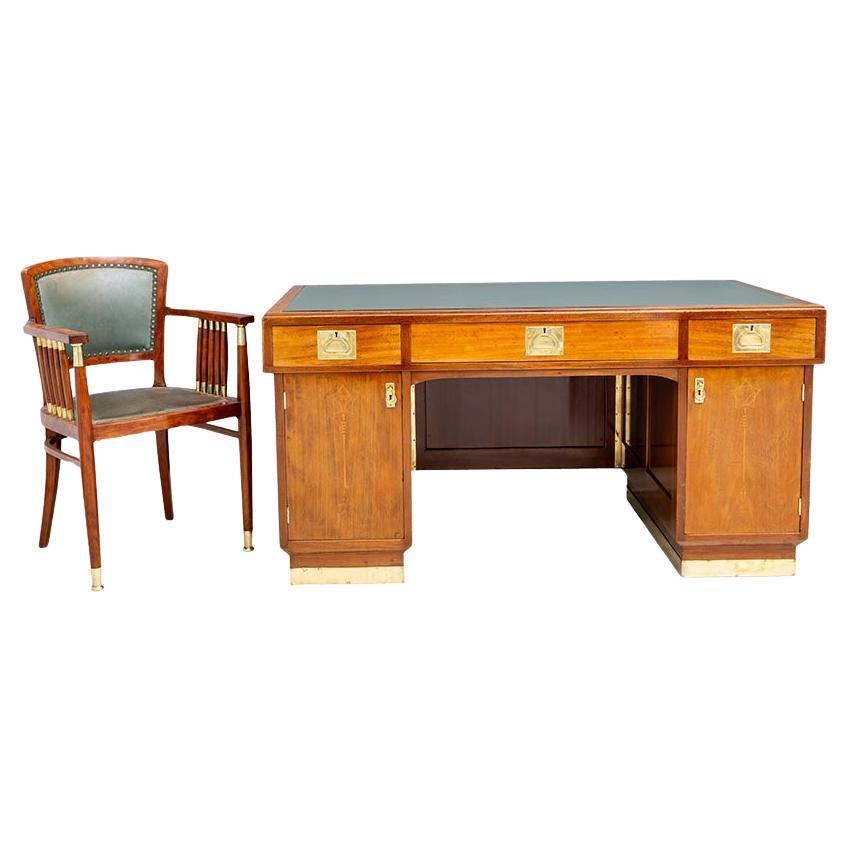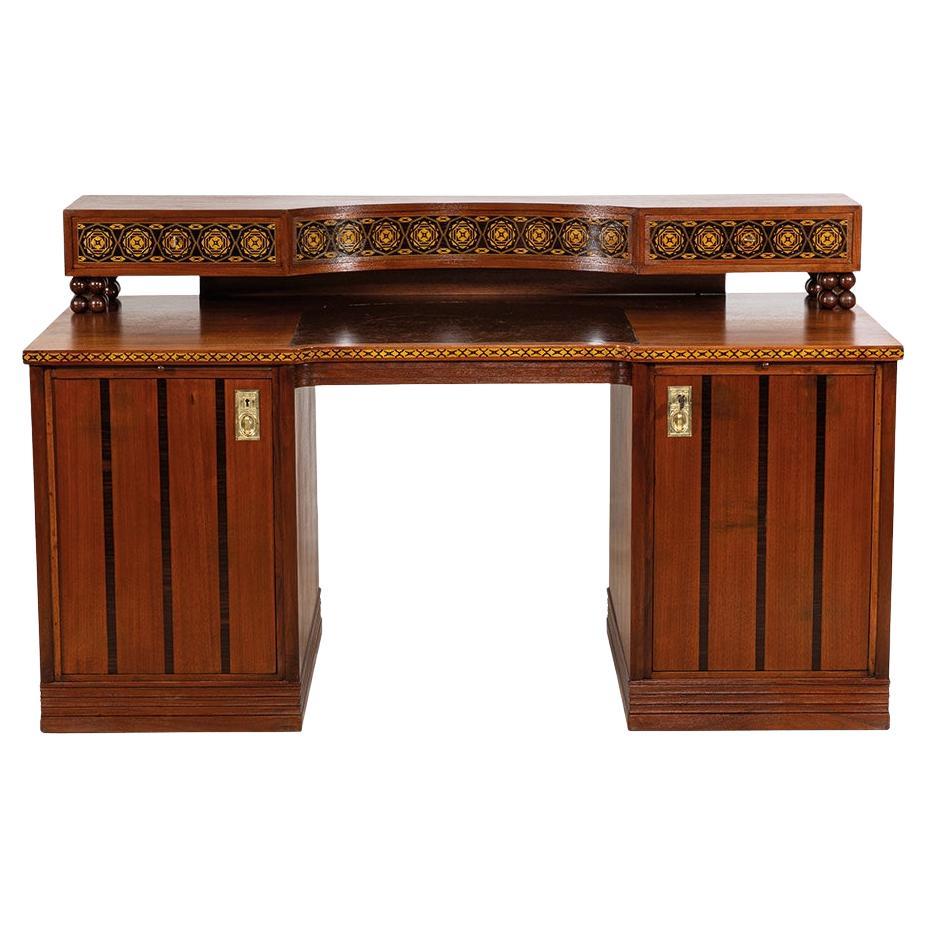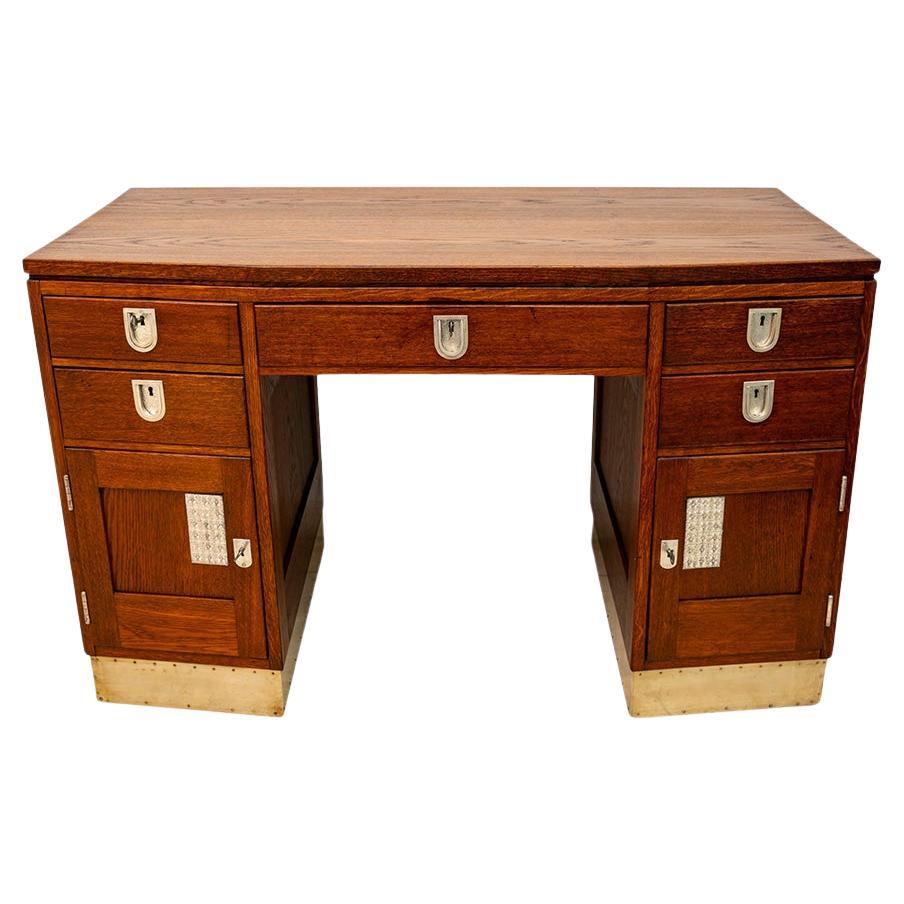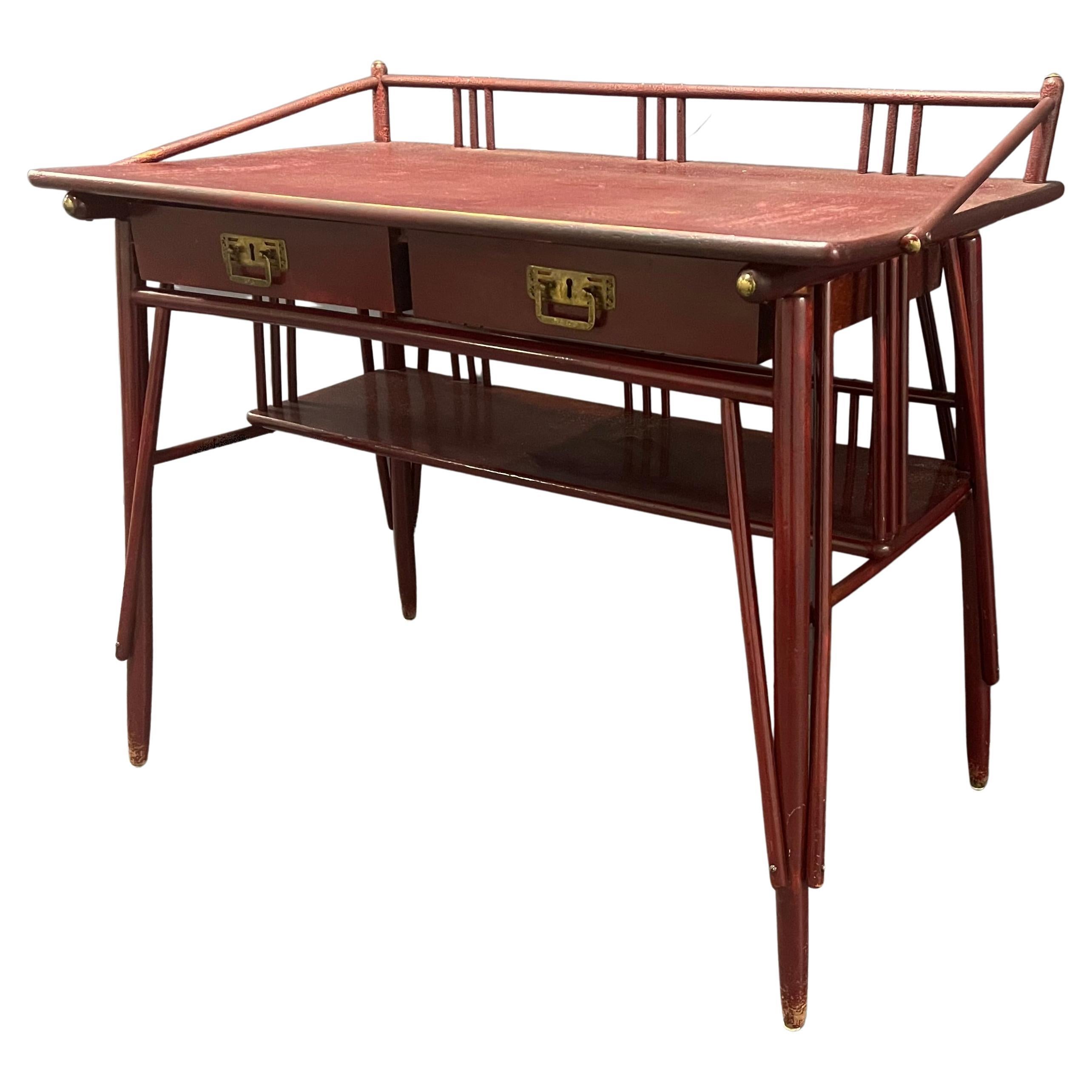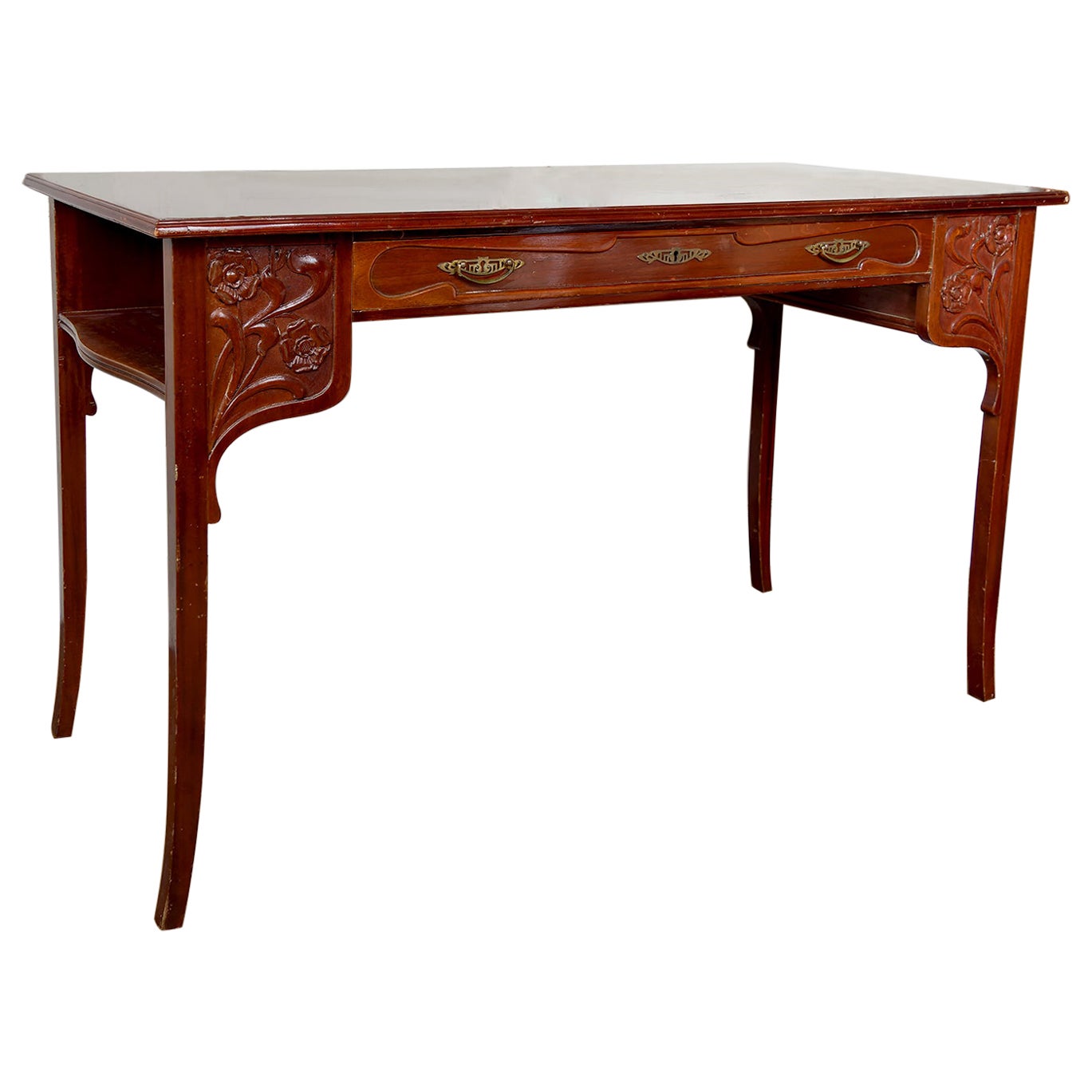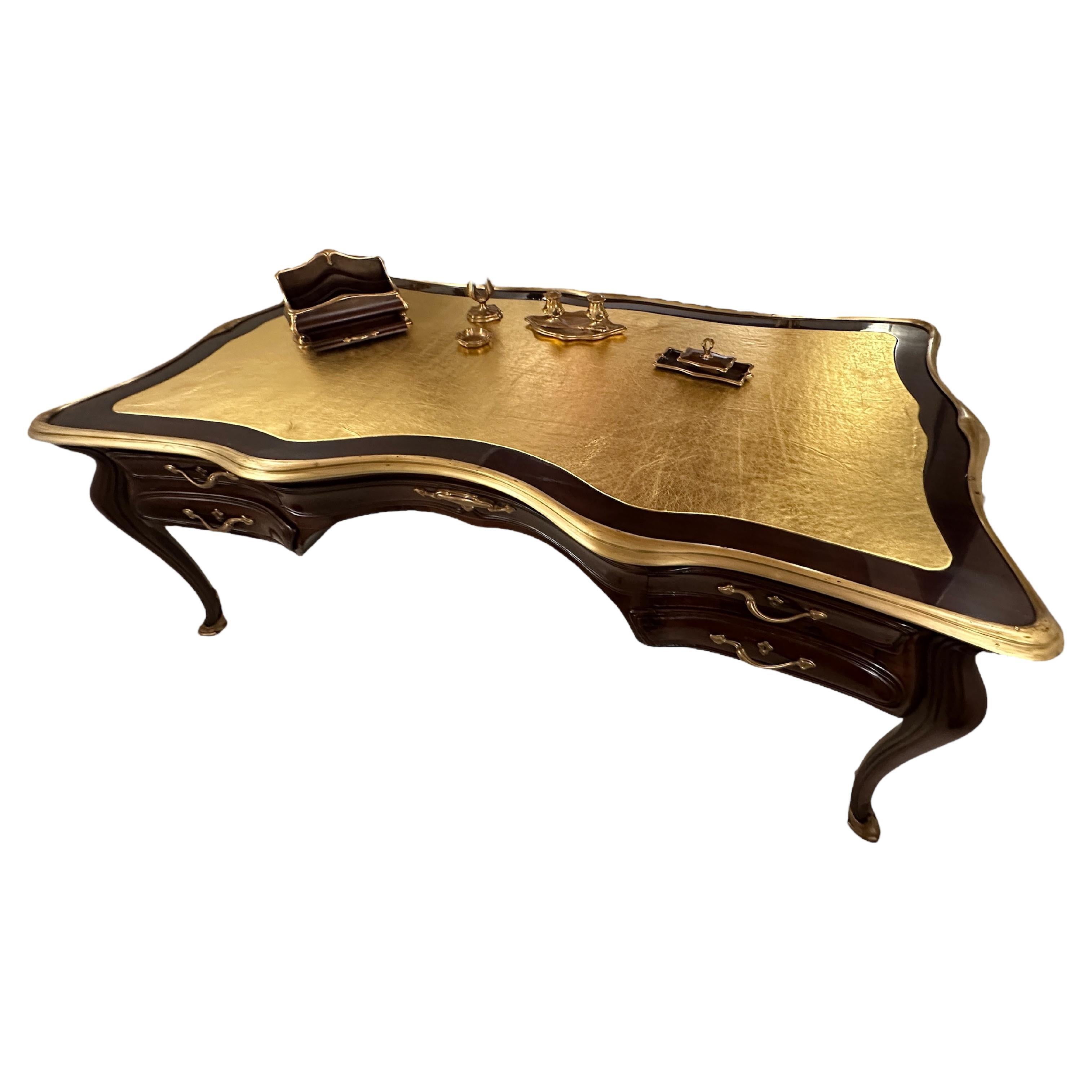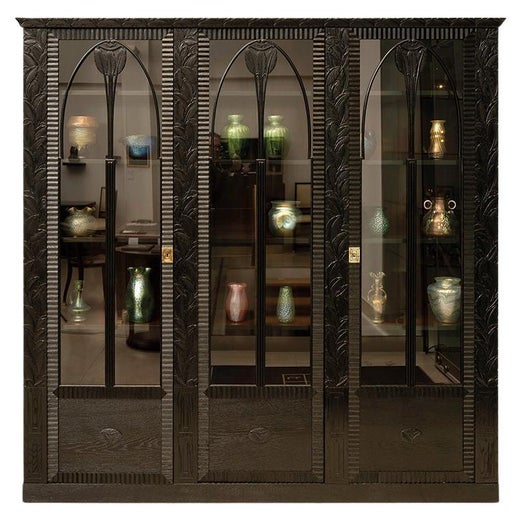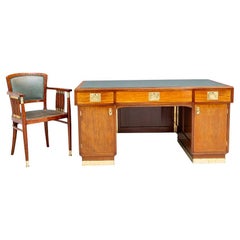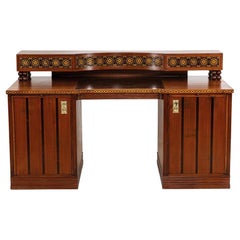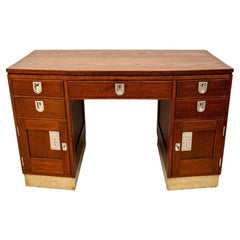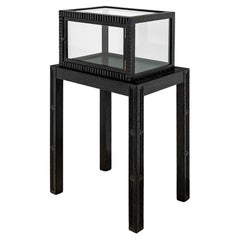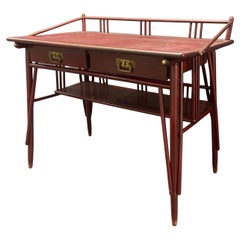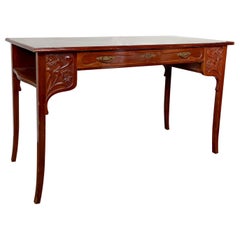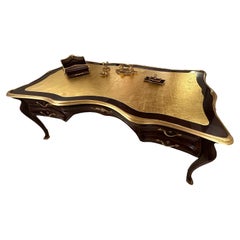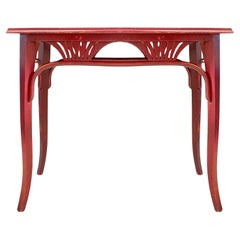Items Similar to Viennese Art Nouveau desk with armchair Hans Bolek August Ungethüm 1913
Want more images or videos?
Request additional images or videos from the seller
1 of 16
Viennese Art Nouveau desk with armchair Hans Bolek August Ungethüm 1913
$88,786.34per set
£66,184.09per set
€74,750per set
CA$123,755.72per set
A$134,501.18per set
CHF 71,078.61per set
MX$1,627,173.96per set
NOK 885,233.51per set
SEK 836,158.11per set
DKK 569,255.19per set
About the Item
technique:
desk: spruce body, swamp oak veneer, stained black and semi-matt polished; chair: solid swamp oak, stained black and semi-matt polished; new fabric upholstery
original key, marked "A. Ungethüm"
bibliography: Interior from the winter exhibition 1913/14 at MAK; photograph of a room design by Hans Bolek, executed by August Ungethüm, Möbelfrabrik August Ungethüm, MAK Inv. nr. KI 7905-13 ; Innendekoration: mein Heim mein Stolz, Heft 25, 1914, S. 110 ; Kunst & Handwerk, Vol. 12, 1913, p. 629; Deutsches Volksblatt 11. November 1913, S. 6 ; Neues Wiener Tagblatt, 22. November 1913, p. 33, yearly report 1913 Austrian Museum of Art and Industry (ÖMKI), p. 4.
The furniture in this extraordinary study was designed in 1913 by Hans Bolek, an extremely talented student of the legendary Josef Hoffmann, and was impressively presented at the renowned Winter Exhibition of the Austrian Museum of Art and Industry (ÖMKI) in 1913/1914, together with a living room. The masterful craftsmanship was carried out by August Ungethüm, who was also trained
under Hoffmann and was known for his excellent craftsmanship. International interior design magazines and daily newspapers praised the room at the time for its groundbreaking style and craftsmanship, which brought it attention and recognition far beyond Austria's borders.
The entire study was purchased on November 6, 1913, by the then Minister of Public Works, Baron Ottokar Trnka von Laberon, further underscoring its high cultural and political value. Hans Bolek's work during his training period comprises only a few complete room furnishings, which makes this ensemble an exceptionally rare and art-historically significant testimony to Viennese Art Nouveau. The furniture is characterized by a clear, elegant design that was strongly influenced by Josef Hoffmann's style. Particularly noteworthy is the harmonious combination of strictly geometric forms with flowing floral elements— two seemingly contradictory styles that Bolek
brought into aesthetic harmony with particular sensitivity and skill. This stylistic synthesis emphasizes the Viennese Art Nouveau's pursuit of a combination of aesthetic purity, decorative expressiveness, and functional clarity.
The ensemble consists of a representative desk with elegant fittings and a matching armchair made of solid oak, an impressive cabinet display case, and a stylish table display case or humidor. All pieces of furniture, except for the chair, are made of solid spruce wood and covered with high-quality swamp oak veneer. The surfaces have been carefully stained and finished with a silk matt shellac polish, giving them a subtle, elegant sheen. A special bonus is the existence of the original keys, which bear the company name “A. Ungethüm.” Particularly impressive is the cabinet display case, whose interior is lined with precious mahogany veneer, giving the display case a warm and deep aura. A historical photo of part of this ensemble is in the renowned collection of the Museum of Applied Arts (MAK) in Vienna and was published in various contemporary magazines during Bolek's lifetime. This unique group of furniture represents the spirit of late Viennese Art Nouveau in the highest quality and incomparable elegance and is exemplary of this period at the turnof the stylistic eras.
- Creator:Hans Bolek (Designer),August Ungethüm Kunstmöbel-Fabrik (Cabinetmaker)
- Dimensions:Height: 30.32 in (77 cm)Width: 63 in (160 cm)Depth: 31.3 in (79.5 cm)
- Sold As:Set of 2
- Style:Jugendstil (In the Style Of)
- Materials and Techniques:Spruce,Stained
- Place of Origin:
- Period:1910-1919
- Date of Manufacture:1913
- Condition:Repaired. Reupholstered. Refinished. Wear consistent with age and use. Minor losses.
- Seller Location:Klosterneuburg, AT
- Reference Number:Seller: 10751stDibs: LU5830246954392
Hans Bolek
Hans Bolek was one of the founders of the so-said Österreichischer Werkbund in 1914. He was working together with Josef Hoffmann during the period 1939–41.
About the Seller
5.0
Vetted Professional Seller
Every seller passes strict standards for authenticity and reliability
Established in 2013
1stDibs seller since 2021
17 sales on 1stDibs
- ShippingRetrieving quote...Shipping from: Vienna, Austria
- Return Policy
Authenticity Guarantee
In the unlikely event there’s an issue with an item’s authenticity, contact us within 1 year for a full refund. DetailsMoney-Back Guarantee
If your item is not as described, is damaged in transit, or does not arrive, contact us within 7 days for a full refund. Details24-Hour Cancellation
You have a 24-hour grace period in which to reconsider your purchase, with no questions asked.Vetted Professional Sellers
Our world-class sellers must adhere to strict standards for service and quality, maintaining the integrity of our listings.Price-Match Guarantee
If you find that a seller listed the same item for a lower price elsewhere, we’ll match it.Trusted Global Delivery
Our best-in-class carrier network provides specialized shipping options worldwide, including custom delivery.More From This Seller
View AllViennese Jugendstil desk and armchair J.W. Müller ca. 1905
By J.W. Müller
Located in Klosterneuburg, AT
Table dimensions: H 78 cm x W 152.5 cm x D 83 cm Armchair: H 90 cm x W 58 cm x D 52 cm
The K. u. K. Hoftischlerei J. W. Müller was one of the leading workshops. It regularly prese...
Category
20th Century Austrian Art Nouveau Desks and Writing Tables
Materials
Mahogany
Art Nouveau desk by Matthias Feller manufactured by M. Ballin München ca. 1912
Located in Klosterneuburg, AT
Desk, Matthias Feller (design), M. Ballin München (manufacturer), ca. 1912
marked twice with "M. Ballin München"; bib.: "Innendekoration - mein Heim, mein Stolz", 1912, S. 200.
tec...
Category
Vintage 1910s Austrian Jugendstil Desks and Writing Tables
Materials
Walnut
Jugendstil desk designed by August Knobloch’s Nachfolger ca. 1908
Located in Klosterneuburg, AT
This exquisite desk was made by the furniture factory August Knobloch's Nachfolger. In the period around 1900, the cabinetmaker's factory belonged to the circle of Vienna's most impo...
Category
Antique Early 1900s Austrian Jugendstil Desks and Writing Tables
Materials
Alpaca, Oak
$16,172 Sale Price
20% Off
Viennese Art Nouveau showcase table Hans Bolek August Ungethüm 1913
By August Ungethüm Kunstmöbel-Fabrik, Hans Bolek
Located in Klosterneuburg, AT
Technique: spruce; swamp oak veneer, stained and semi-matt polished
The furniture in this extraordinary study was designed in 1913 by Hans Bolek, an extremely talented student of th...
Category
Vintage 1910s Austrian Jugendstil Vitrines
Materials
Spruce
Viennese Art Nouveau side table Joseph Maria Olbrich & Josef Hoffmann ca. 1900
By Joseph Maria Olbrich, Josef Hoffmann
Located in Klosterneuburg, AT
Technique: Solid maple frame, stained solid cherry wood top, stained red-brown and dark brown ornamentally, curved frame end at the bottom
This elegant Secessionist side table was c...
Category
Antique Early 1900s Austrian Jugendstil Coffee and Cocktail Tables
Materials
Maple
A. Loos "Elefantenrüsseltisch" Jugendstil ca. 1910
By Friedrich Otto Schmidt, Adolf Loos
Located in Klosterneuburg, AT
The famous Viennese architect and designer Adolf Loos was one of the pioneers of modern architecture. In particular, his hollistically designed residential projects, in which he drew up both the building and the interior furnishings, receive special art historical attention today.
Loos first used this design, called the "elephant trunk table...
Category
Vintage 1910s Austrian Jugendstil Coffee and Cocktail Tables
Materials
Brass
$28,221 Sale Price
28% Off
You May Also Like
Rare No.49 Art Nouveau Desk from Finland
Located in Munich, DE
wonderful light and elegant desk from finland by suomen tuoli-, kalusto- ja sorvaustehdas. from the area of jyväskylä & muurame. this small and rare desk will be an wonderful additio...
Category
Vintage 1910s Finnish Art Nouveau Desks and Writing Tables
Materials
Brass
Art Nouveau / Jugendstil Desk, Carved Wood, Germany, Circa 1910
Located in VÉZELAY, FR
Features:
Style: Art Nouveau / Jugendstil
Material: Carved wood
Origin: Germany, circa 1910
Sculptures: Elegant floral carvings
Functionality: A large drawer and two niches / booksh...
Category
Vintage 1910s German Art Nouveau Desks and Writing Tables
Materials
Brass, Bronze
Desk Jugendstil, Art Nouveau, Liberty , Sign: G. Keller Orfevre, 22 rue Joubert
Located in Ciudad Autónoma Buenos Aires, C
The set includes, armchair, desk and desk accessories. It is from the first era.
Bibliography: Revue de l’Art N°185 – March 2014, p. 23.
Founded in 1857 by Gustave Keller, the Keller...
Category
Early 20th Century French Art Nouveau Desks and Writing Tables
Materials
Bronze
Art Nouveau Table or desk from Gebrüder Thonet, 1910s
By Gebrüder Thonet Vienna GmbH
Located in Linkebeek, BE
Art Nouveau Table or desk from Gebrüder Thonet, 1910s
Art deco - Palmette - Table - Model 8122
Measures : 91.5 x 61cm H:78cm
Table top has some defects visible in photos
Country of O...
Category
Early 20th Century Austrian Art Nouveau Desks and Writing Tables
Materials
Bentwood
Eugenio Quarti desk, Chair and Trah in Style Liberty or Art Nouveau, Jugestails
By Eugenio Quarti
Located in Ciudad Autónoma Buenos Aires, C
Eugenio Quarti (Desk , chair and Trash )
Style: Liberty or Art Nouveau or Modernism or Jugendstil
Furniture realized mainly in inlays of nacre and metallic applications, parchament
bronze ferrules.
We have specialized in the sale of Art Deco and Art Nouveau styles since 1982.If you have any questions we are at your disposal
Pushing the button that reads 'View All From Seller'. And you can see more objects to the style for sale.
Eugenio Quarti was born in Villa d'Almè, a small village in the province of Bergamo, from an artisan family of woodworkers. In 1881, at the age of 14 years old he goes to Paris, where he will learn new techniques and broaden his horizons. In 1886, he returned to Italy and settled in Milan where he worked, for a short period, with Carlo Bugatti and then open his own workshop in via Donizetti 3.
His early works are strongly marked by Bugatti Moorish’s style, but already the exhibition of Turin of 1898 you can see the first signs of Art Nouveau and his personal style. He was always attentive to the quality and originality of his accomplishments, always attentive to every art form. Furniture realized mainly in walnut with inlays of nacre and metallic applications. Develop over time a harmonic elegance of the decor, with thread-like grounds, valuable wood species and inlays and high quality bezels with fine materials (nacre, silver, copper, bronze, pewter, etc.), this characteristic was called "the goldsmith of furniture makers."
In 1900 he participates at the Paris International exposition where he received the "Grand Prix" of the jury. Will participate in a number of other exposures as that of Turin in 1902 and Milan in 1906 where he will receive the "Grand Royal Award" and the "Diploma of gold medal".
Eugenio Quarti worked with the most prestigious architects of his time (Giuseppe Sommaruga, Luigi Broggi, Alfredo Campanini, etc.) well as with the great artists/craftsmen of his time as Alessandro Mazzucotelli. He also worked as a decorator, designing entire furniture for both public and private buildings. It was he who designed the furniture for Palazzo Castiglioni in Milan, Villa Carosio in Baveno, Grand Hotel and Casino in San Pellegrino Terme, Hungaria Palace Hotel in Venice Lido. One of his most significant works were the vessels of the "Bar Camparino", at the entrance site of the Galleria Vittorio Emanuele in Milan. however not disdain also committed less important such as the furniture for Villa Mariani to Bordighera residence of the painter Pompeo Mariani...
Category
Antique Early 1900s Italian Art Nouveau Desks and Writing Tables
Materials
Bronze
Art Nouveau Desk In Wood With Brass Decoration, Late 19th And Early 20th Century
Located in MARSEILLE, FR
Beautiful Art Nouveau wooden desk with rich floral decoration in brass cut and fixed to the wood.
It opens with 3 drawers and 2 doors, the bigger one contains sliding drawers. ...
Category
Antique Late 19th Century European Art Nouveau Desks and Writing Tables
Materials
Brass
